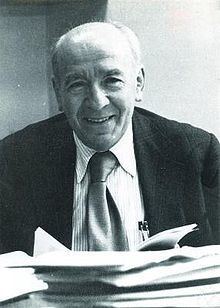Residence USA Citizenship Poland, USA Name Mark Kac | Nationality Polish Role Mathematician Alma mater Lwow University | |
 | ||
Born August 3, 1914Krzemieniec ( 1914-08-03 ) Died October 25, 1984, Southern California, California, United States Education Lviv University (1931–1937) Awards Chauvenet Prize, Guggenheim Fellowship for Natural Sciences, US & Canada, George David Birkhoff Prize Books Mathematics and logic, Discrete thoughts, Statistical Independence in Probab, Some stochastic problems, Probability and Related T Similar People Hugo Steinhaus, Richard Feynman, Stanislaw Ulam, Gian‑Carlo Rota, Paul Ehrenfest | ||
Mark kac
Mark Kac ( ; Polish: Marek Kac; August 3, 1914 – October 26, 1984) was a Polish American mathematician. He was born to a Polish-Jewish family; their town, Kremenets (Polish: "Krzemieniec"), changed hands from the Russian Empire to Poland when Kac was a child. His main interest was probability theory. His question, "Can one hear the shape of a drum?" set off research into spectral theory, with the idea of understanding the extent to which the spectrum allows one to read back the geometry. (In the end, the answer was "no", in general.)
Contents
Kac completed his Ph.D. in mathematics at the Polish University of Lwów in 1937 under the direction of Hugo Steinhaus. While there, he was a member of the Lwów School of Mathematics. After receiving his degree he began to look for a position abroad, and in 1938 was granted a scholarship from the Parnas Foundation which enabled him to go work in the United States. He arrived in New York City in November, 1938.
With the onset of World War II, Kac was able to stay in America, while his parents and brother who remained in Western Ukraine were murdered by the Germans in the mass executions in Krzemieniec in August 1942.
From 1939-61 he was at Cornell University, first as an instructor, then from 1943 as assistant professor and from 1947 as full professor. While there, he became a naturalized US citizen in 1943. In the academic year 1951–1952 Kac was on sabbatical at the Institute for Advanced Study. In 1952, Kac, with Theodore H. Berlin, introduced the spherical model of a ferromagnet (a variant of the Ising model) and, with J. C. Ward, found an exact solution of the Ising model using a combinatorial method. In 1961 he left Cornell and went to Rockefeller University in New York City. In the early 1960s he worked with George Uhlenbeck and P. C. Hemmer on the mathematics of a van der Waals gas. After twenty years at Rockefeller University, he moved to the University of Southern California where he spent the rest of his career.
Work
In his 1966 article with the title "Can one hear the shape of the drum" Kac asked the question whether two resonators ("drums") of different geometrical shapes can have exactly the same set of frequencies ("sound tones"). The answer was negative, meaning that the eigenfrequency set does not uniquely characterize the shape of a resonator.
